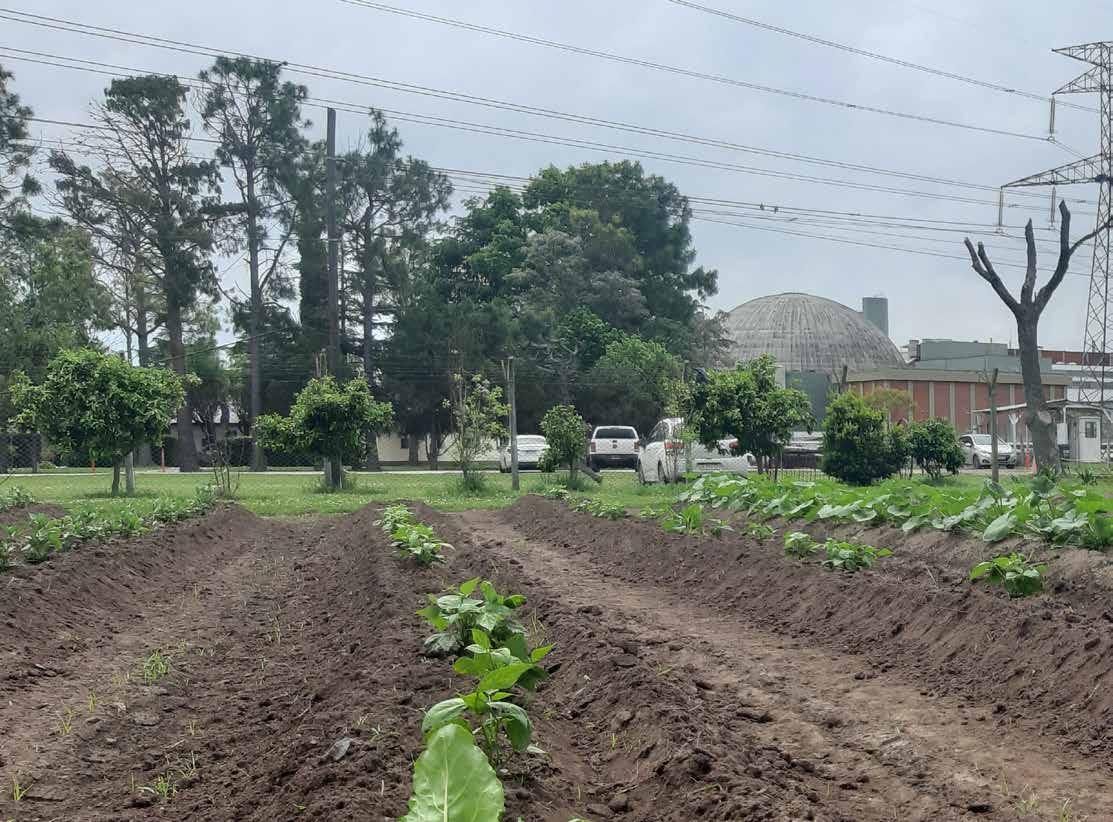
6 minute read
Nucleoeléctrica Argentina
SUSTAINABLE ENERGY GUARANTEED!
Advertisement
María Bernardita Guschmer

When the greatest achievements of the 20th century are mentioned, rarely does nuclear energy enter the conversation. The term nuclear has taken on negative connotations among the general public, who in turn have overlooked the benefits of nuclear power for the long-term good of the plant. Managed properly, nuclear power offers one of the most sustainable forms of power available, explaining why countries like China, the UK and Turkey are all now investing in it.
Approximately 5% of Argentina’s electricity is generated by nuclear power. Nucleoeléctrica Argentina S.A. is the company which manages Argentina’s three nuclear power reactors: Atucha I, Atucha II and Embalse and is responsible for the marketing and maintenance of the country’s nuclear power reactors. The company is also responsible for the new nuclear power plant projects to be built in the country. Business Excellence recently spoke with Isidro Baschar, Member of the Board at Nucleoeléctrica Argentina. Mr. Isidro Baschar

talked us through the company in some considerable detail, outlining the role it plays in energy security in Argentina. At a time when the world is looking to transition away from fossil fuels for energy generation, Mr. Isidro Baschar makes a strong case for the role that nuclear energy can play in this transition.
Backstory
Nucleoeléctrica Argentina was founded in 1994 at a time when the government of the day sought to restructure the country’s nuclear
industry, all under the umbrella of the National Atomic Energy Commission (“Comisión Nacional de Energía Atómica” or “CNEA”). 12 years later, in 2006, Argentina’s president of the day, Néstor Kirchner, announced a plan which would be a boon for Nucleoeléctrica Argentina.
Mr. Baschar explains: “President Kircher decided to announce the relaunch of the country’s nuclear plan, and among its main projects, was to complete Atucha II, whose development had stopped in 1994. The commissioning works began in 2011, after the completion of the assembly works and the project was completed in June 2014, when the project began its first operations.” The completion of Atucha II was part of a more ambitious nuclear program, which included other projects such as the development of an Argentine-designed power reactor, CAREM.
Of course, Nucleoeléctrica Argentina already owned the plants of Atucha I, Atucha II and Embalse. As Mr. Baschar tells us, the Atucha I “Presidente Juan Domingo Perón” project started in June 1968 and connected to the national grid in March 1974, before providing power in June of that year. For its part, construction on Embalse began in May


1974 and began its commercial operations in January 1984.”
Mr. Baschar says: “In 2015, Nucleoeléctrica Argentina began the Life Extension Project for these reactors, which finished successfully in 2019. It ensures that these plants could now begin 25 more years of providing power to another generation of Argentines.” Furthermore, the length of the commission - as well as the clean nature of the energy - underlines the potential of nuclear power in a fossil-free future.
A Central Role in Argentina’s Energy Outlook
generation. Mr. Baschar says: “at Did you know? the end of 2020, as a result of the adverse context brought by Nucleoeléctrica Covid-19, nuclear energy reached Argentina’s 1763 a record for electricity generation, MW capacity generating 7,947 MW/h in the represents 5% of month of September.” installed energy He emphasizes what this on Argentina’s means for the longer term national grid stability of the country’s energy: and 6-8% of the “This shows that the nuclear country’s national plants don’t depend on seasonal electricity or climatic factors to function, generation. and are key in the fight against climate change, as they neither generate harmful gases nor contribute to the greenhouse effect. For example, in September 2020, the month just mentioned, the plants saved over As mentioned at the outset, Nucleoeléctrica 5 million tonnes of CO2.” Argentina’s 1763 MW capacity represents 5% It’s a compelling argument, particularly at of installed energy on Argentina’s national grid a time when lower oil and gas prices could and 6-8% of the country’s national electricity incentivize their usage by governments

looking to make cuts. He continues: “All of these factors mean that the generation of nuclear power is a fundamental pillar to ensure that we achieve the UN’s 17 sustainability goals (SDGs), particularly in the areas of accessible non-contaminating energy and the promotion of sustainable industry.”
Continuing Projects
Perhaps because of the longevity of the existing reactors, or as a result of the sustainability outlined in the previous section, an expansion of Argentina’s nuclear energy capacity is at the planning state. As Mr. Baschar says: “Since the Nuclear Plan in 2010, Argentina has been

negotiating the possible construction of future nuclear plants, officially sanctioned by the so-called Nuclear Law of Argentina.”
He continues: “This in turn has been supported by the establishment of a Comprehensive Strategic Association and the marking of a Framework Agreement for Economic and Investment Cooperation between Argentina and China. These agreements include in their brief cooperation in the area of electricity and the construction of nuclear reactors on Argentine territory.”
The Impact of Covid-19
Understandably, given everything already outlined, from the outset of the Covid-19 outbreak, nuclear energy was classified as a central activity in Argentina. Thus, Nucleoeléctrica Argentina implemented strict prevention measures to protect the health of all its workers, while guaranteeing the maintenance and safe operation of nuclear power plants and the continuity of energy production and commercialization.
Mr. Baschar says: “For example, we set up a working group dedicated to the analysis and monitoring of protection measures. This has involved the development of a health and hygiene protocol that established, among other measures, the readjustment of workstations and common areas, along with

increasing their cleaning and disinfection, using technology to ensure compliance and improve safety.”
He continues: As an additional measure, all workers who enter the plants are routinely tested and must complete a roadmap in which they leave a record of the places they were and people with whom they had close contact on the day. We also have put in place measures for suppliers and contractors that enter the facilities, among which is the preparation of a roadmap and an affidavit of health before entering.
Bringing a More Sustainable Future
The world’s 443 existing nuclear power stations are situated in just 31 countries and yet, produce 10% of the world’s electricity. In Latin America, only Argentina, Brazil and Mexico possess plants. Of this, Mr. Baschar says: “But Argentina was a pioneer in the peaceful usage of nuclear energy, positioning ourselves as an international supplier of nuclear technology as well as ensuring energy security for Argentina.”
“Together with the CNEA and other strategic partners, Argentina is now a leader in the research, design and construction of nuclear reactors and plans to make the quantum leap to consolidate itself as a leader in this industry.” With over half a century of clean and consistent electricity being provided by its reactors, Argentina and Nucleoeléctrica Argentina are well positioned to assume that leadership role.
NUCLEOELÉCTRICA ARGENTINA +54 11 5129 3400 info@na-sa.com.ar @Nucleoelectrica www.na-sa.com.ar





